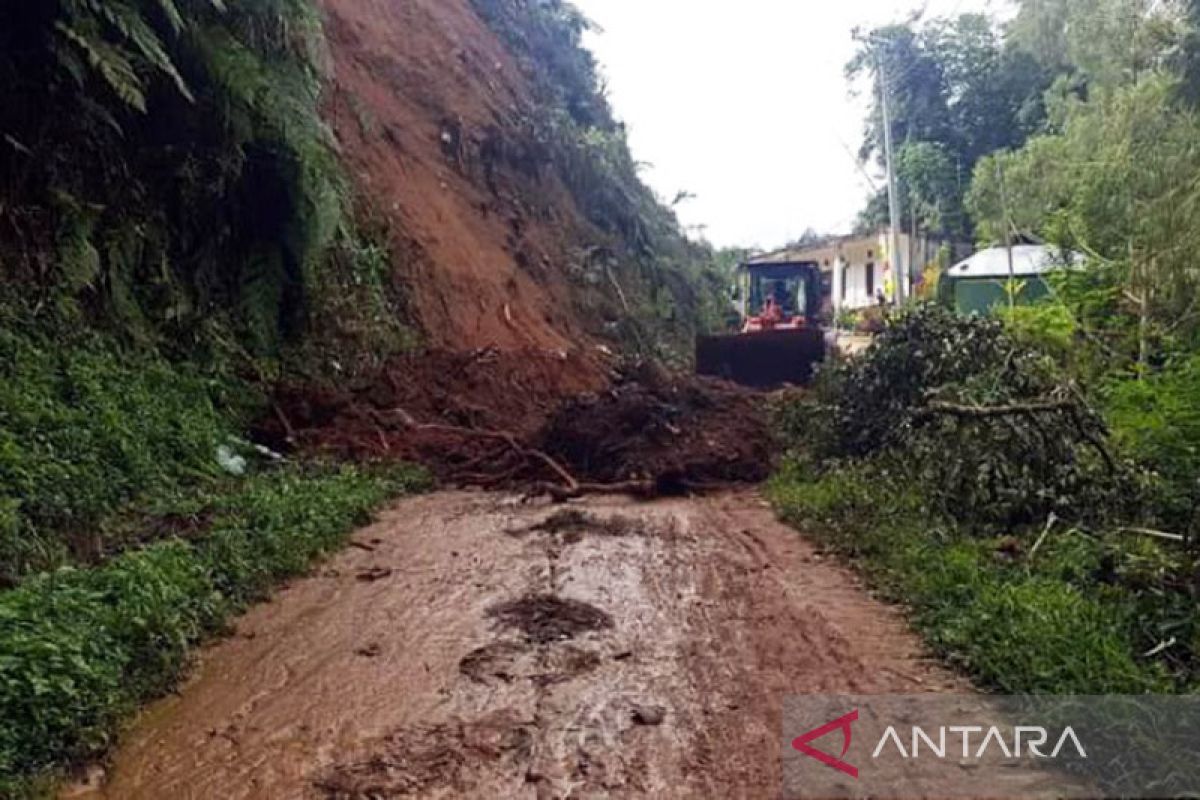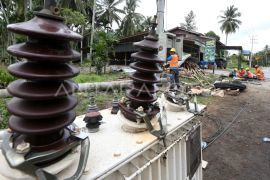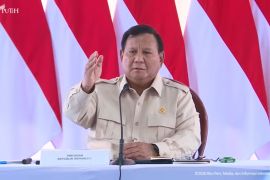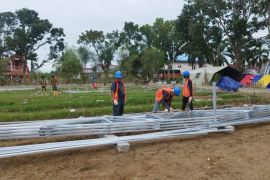Its geographical location has made Indonesia prone to disasters such as volcanic eruptions, earthquakes, and tsunamis. Not only that, as the world’s largest archipelagic country, the climate crisis has made Indonesia more vulnerable to other natural disasters such as floods, landslides, cyclones, storms, heatwaves, and forest fires.
The World Bank in 2018 placed Indonesia 12th out of 35 countries facing the highest risk of natural disasters. Aside from causing fatalities, disasters in Indonesia have also inflicted significant economic losses.
A study conducted by the Ministry of Finance in 2020 pegged the average value of direct damage experienced by Indonesia in the past 15 years at around Rp20 trillion per year.
According to the director of spatial planning, land affairs, and disaster management at the Ministry of National Development Planning (PPN/Bappenas), Sumedi Andono Mulyo, in order to make the Indonesian nation resilient to disasters, the government is continuing to strengthen the country’s disaster resilience system.
Related news: BNPB reports 1,175 natural disasters struck during January 1-April 3
The measures taken by the government have included building an integrated database, strengthening the early disaster warning system, building disaster awareness through education and literacy improvement, strengthening collaboration between ministries and institutions, and increasing investment and funding synergies.
In normal situations, before a disaster occurs, ministries and institutions, as well as local governments, use the state budget (APBN) and the regional budget (APBD) to mitigate potential losses due to disasters.
Giving examples, Mulyo said that the Ministry of Public Works and Public Housing (PUPR) has been building reservoirs to control floods, the Ministry of Villages has been enlightening rural communities regarding disaster response, and the National Disaster Mitigation Agency (BNPB) and the Ministry of Home Affairs have been working to strengthen the capacity of regional governments to deal with disasters.
Then, the BNPB, the Meteorology, Climatology, and Geophysics Agency (BMKG), the Geological Agency of the Ministry of Energy and Mineral Resources, and the National Research and Innovation Agency (BRIN) have been striving to strengthen the country's early detection system.
“Aside from that, regional governments have also been carrying out several pre-disaster activities," he added.
Ministries, institutions, and regional governments have also been collaborating to take anticipatory measures against disasters in national tourism strategic areas (KSPN).
For example, the Agrarian Affairs and Spatial Planning Ministry has been tasked with compiling a detailed spatial plan for national tourism strategic areas, the BNPB has been asked to prepare disaster risk maps, and the PUPR Ministry has been assigned the responsibility of preparing evacuation routes and evacuation sites.
"These are specifically for national tourism strategic areas such as Labuan Bajo, Lake Toba, Borobudur (temple), and others," Mulyo said.
The government has readied a disaster reserve fund in the state budget worth Rp5–10 trillion per year since 2004. However, the amount is insufficient considering that average losses caused by disasters reach Rp20 trillion per year.
Related news: Government should stem pace of climate change: BMKG head
Disaster Pooling Fund
To cover the financing gap, the Indonesian government launched innovative funding in the form of a joint fund or Disaster Pooling Fund (PFB) in August 2021, which was marked by the issuance of Presidential Regulation Number 75 of 2021 concerning the Joint Fund for Disaster Management on August 13, 2021.
The PFB is a manifestation of the government's commitment to strengthening fiscal resilience to cope with natural and non-natural disasters so that it does not have to use other allocations when the disaster reserve fund allocated from the state budget is insufficient.
Head of the Regional and Bilateral Policy Center (PKRB) of the Fiscal Policy Agency (BKF) at the Ministry of Finance, Nella Sri Hendriyetty, explained that the use of other allocations to deal with disasters could burden the state budget and disrupt the country’s economic growth.
With the existence of the PFB, the state budget only funds disasters with low risk, while PFB funds disasters with high risk.
The PFB also allows the government to regulate disaster risk financing strategies through the state or regional budgets, as well as transfer risk to third parties through the insurance of government and community assets.
“The existence of PFB is expected to accelerate community recovery from disasters and protect the most affected people, namely the poor and vulnerable people,” Hendriyetty pointed out.
She affirmed that the government has appointed the Environmental Management Agency (BPDLH) to manage PFB with an initial fund of Rp7.3 trillion.
The BPDLH will serve as the fund manager that will work professionally and distribute funds to ministries, institutions, and regional governments submitting proposals for handling disasters.
The government expects that in the near future, investor trust in PFB would improve so that the funds collected will increase.
Meanwhile, in the next two to three years, the PFB will fund the purchase of insurance premiums for all buildings belonging to ministries and institutions in the country. It will also be used for co-financing with regional governments to insure regional assets in a bid to minimize the damage burden on the government when a disaster occurs.
These efforts are expected to help mitigate the impacts of disasters that are prone to occur in Indonesia. Educating the community has also been deemed essential, among other things, so that people can act quickly in responding to disasters and insure their assets to reduce the risk of losses due to disasters.
Related news: Strengthening regional capacity for reducing disaster risks
Editor: Suharto
Copyright © ANTARA 2022












